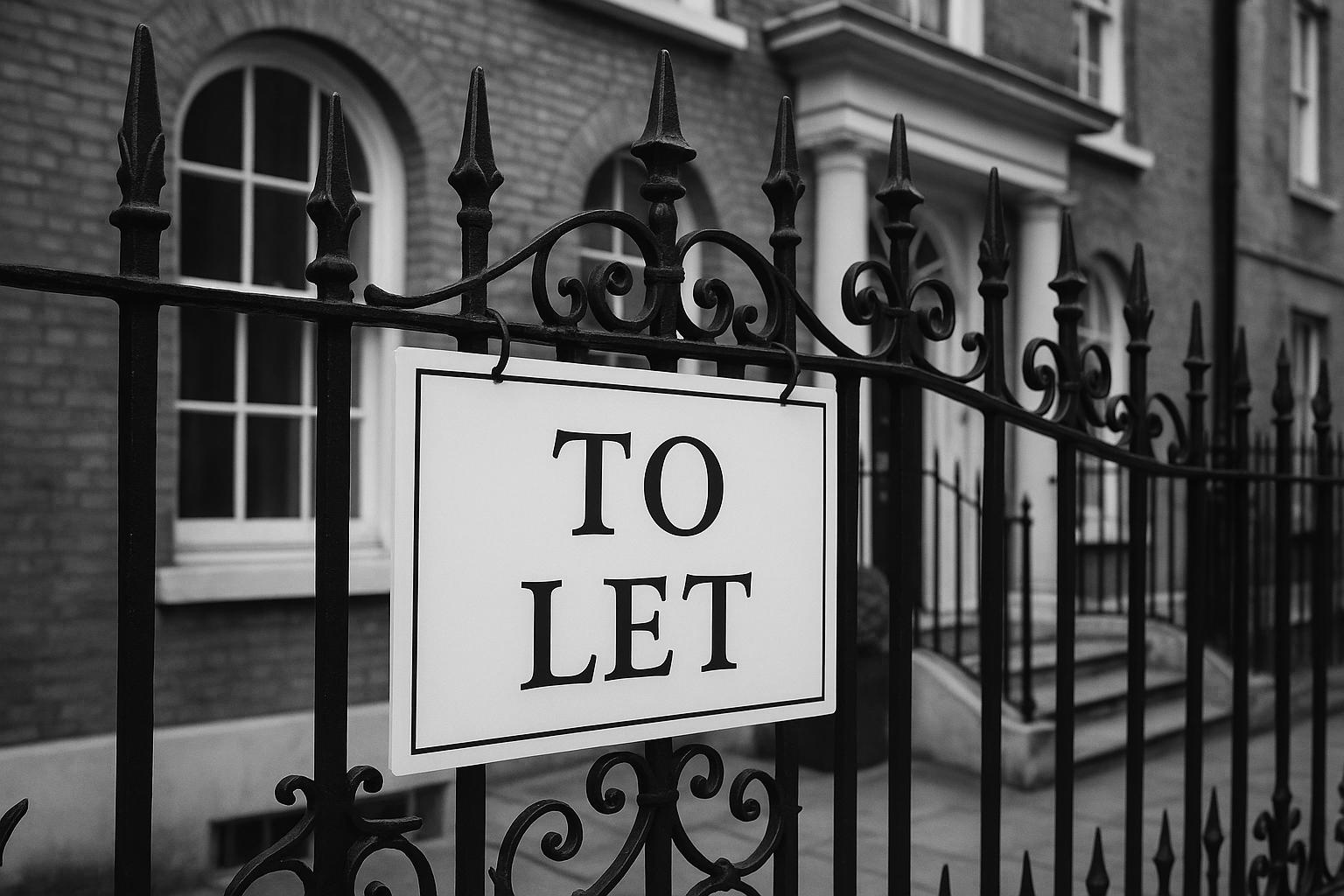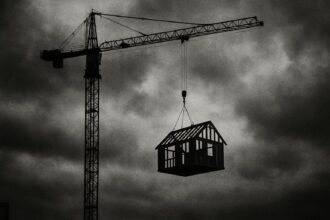The prime London lettings market is booming amid tax rule reforms and investor caution, with tenancies rising sharply despite falling high-end property sales, signalling a strategic shift towards renting in the capital’s luxury sector.
London’s prime lettings market is witnessing a notable upswing, fueled primarily by ongoing tax uncertainties and evolving investor behaviour, according to the latest findings from Knight Frank. While the number of new tenancies in prime central London (PCL) for properties renting above £1,000 per week increased by 7% year-on-year to May, sales of properties priced above £2 million declined by 4% over the same period. This divergence underscores a growing shift towards renting rather than buying in the capital’s luxury property sector.
Notably, areas such as Notting Hill and Kensington, once robust sales markets, are now seeing a significant migration of high-value properties towards lettings. This trend has been accelerated by the scrapping of the non-domiciled tax rules in April, which historically allowed wealthy individuals to live in the UK without paying tax on their overseas income and gains. The new legislation, introducing a four-year cap on this status and subjecting worldwide assets to UK inheritance tax, has prompted some foreign owners to consider relocating abroad temporarily while keeping their UK property rented out, preserving the option of a London base.
Tom Bill, head of UK residential research at Knight Frank, noted that “pricing has softened as more high-quality stock comes to the market” and highlighted that “more owners are looking at their options overseas and renting out their property in the meantime.” This cautious stance among landlords is reflected in increased lettings demand in the super-prime segment, with tenancies above £5,000 per week in prime central London surging 15% in the year to May.
The legislative environment is also playing a role in shaping market dynamics. The introduction of the Renters Rights Bill and the recent hike in stamp duty on second homes from 3% to 5% have dampened landlord confidence, particularly in lower price brackets, leading to tighter supply in these segments. Meanwhile, prime rents are escalating modestly, with prime central London rents increasing by 0.9% annually, mainly driven by higher-value rentals. Rents between £500 and £1,500 per week saw a slight rise of 0.3%, while those above £1,500 per week climbed by 1.9%. Prime outer London also experienced rental growth, up 1.7%, with super-prime rents above £1,500 per week leading at 1.3%.
This pattern of heightened lettings activity contrasts with the prime sales market’s struggles. Average property prices in central London fell by 2.2% annually, marking the steepest decline since August the previous year. Quarterly data revealed a 1.4% drop, the sharpest in nearly five years, alongside a 13% decrease in new buyer registrations in the six months to May. Prime outer London has shown relative resilience with a modest 1.1% price increase, supported mainly by domestic demand driven by practical needs.
Earlier reports have linked the growth in lettings demand directly to the non-dom tax regime uncertainty and other policy changes. For example, Knight Frank’s December 2024 and early 2025 analyses noted a significant rise in super-prime lettings—up to 17% in late 2024 and 9% in the first months of 2025. These increases were attributed to foreign investors and high-net-worth individuals maintaining flexibility amid the unpredictability of the tax landscape, including comparison with more generous flat-tax regimes offered by countries such as Italy.
The increase in supply of super-prime rental properties has, however, exerted downward pressure on rents in some cases, with annual declines cited in parts of the super-prime rental sector, though the general trend has been upward on average. The complex interplay of rising debt costs, enhanced regulatory demands including green legislation, and tighter inheritance tax rules is encouraging some landlords to temporarily rent out properties rather than sell, preserving long-term value while navigating short-term challenges.
Additionally, while demand remains steady in the lettings market, particularly for high-end homes, the broader London rental market has seen a 4% decline in tenancies due to shrinking supply. This reflects landlords’ hesitancy amid an evolving regulatory environment and the introduction of the Renters Rights Bill, which could complicate eviction processes and affect rental income security.
Overall, the prime London property market is in a state of flux, characterised by a growing preference for lettings driven by tax uncertainties and legislative changes, juxtaposed against a somewhat subdued sales market facing price declines and fewer new buyers. This environment presents both challenges and opportunities for investors and landlords willing to adapt to the changing landscape.
 Reference Map:
Reference Map:
- Paragraph 1 – [1], [6]
- Paragraph 2 – [1], [6], [2], [4]
- Paragraph 3 – [1], [6], [4]
- Paragraph 4 – [1], [3], [2]
- Paragraph 5 – [1], [7]
- Paragraph 6 – [4], [3], [2]
- Paragraph 7 – [1], [3], [6]
Source: Noah Wire Services
- https://www.property118.com/prime-london-lettings-boom-amid-tax-uncertainty/ – Please view link – unable to able to access data
- https://www.knightfrank.com/research/article/2025-02-03-nondom-uncertainty-boosts-demand-in-londons-highvalue-lettings-market – Knight Frank’s February 2025 report highlights that London’s high-end rental market has seen increased demand due to uncertainties surrounding the non-domiciled tax regime. The number of tenancies above £1,000 per week in the final quarter of 2024 rose by 8% compared to the same period in 2023, with super-prime tenancies above £5,000 per week increasing by 11%. This surge is attributed to wealthy foreign investors opting to rent amid potential tax changes, as the new residence-based scheme from April proposes a four-year cap, making the UK less attractive compared to countries like Italy, which offers a flat tax for up to 15 years. The report also notes a 12% drop in the wider market due to a lull in activity following the general election and Budget. Additionally, average rental value growth in prime London has continued to narrow as stock levels climb after several years of shortages due to tighter landlord regulations, higher mortgage costs, a growing tax burden for buy-to-let investors, and the disruption of the pandemic. The number of new listings across prime central and outer London was 3% higher in 2024 than 2023, according to Rightmove data. Average rents in prime central London increased by 0.6% in the year to January, compared to a rise of 7.2% recorded this time last year. In prime outer London, the increase was 1%, the narrowest since July 2021. The report suggests that the legislative uncertainty and potential tax changes are influencing landlord decisions, with some choosing to rent out their properties rather than sell.
- https://www.knightfrank.co.uk/research/article/2025/3/prime-london-rents-edge-higher-as-landlords-brace-for-policy-changes – Knight Frank’s March 2025 analysis indicates that London’s prime lettings market remains largely stable despite impending legislative changes. Average rents in prime central London rose by 0.7% in the year to February, while prime outer London saw a 1% increase. These modest rises are attributed to landlords’ cautious approach amid potential policy shifts, including the upcoming Renters Rights Bill, which may make it more challenging to evict tenants and collect rental income. Landlords are also contending with tighter green legislation, rising mortgage rates, and less favourable inheritance tax rules introduced in the Budget. The number of new rental listings in prime central and outer London in February was 12% higher than three years ago but 5% lower than the same month last year, suggesting a degree of hesitation among landlords. Despite these challenges, demand remains steady, with the number of new prospective tenants registering in the first two months of the year in London being 1% higher than last year. The super-prime (£5,000+/week) lettings market has experienced a 9% increase in tenancies in the six months to February compared to the same period 12 months ago, driven by uncertainty over proposed changes to the non-domiciled tax regime, with more foreign investors keeping their options open. Corporate demand is also stronger than last year, with enquiries from companies for UK lettings properties 18% higher in February than 2023. The report concludes that while landlords are cautious due to potential policy changes, the market remains resilient, with steady demand and a limited supply of high-quality properties.
- https://www.knightfrank.com/research/article/2024-12-09-postbudget-limbo-boosts-londons-superprime-lettings-market – Knight Frank’s December 2024 report reveals that London’s super-prime (£5,000+ per week) lettings market has experienced a 17% increase in tenancies agreed in prime central London in the three months to November compared to the same period in 2023. This surge is attributed to foreign investors maintaining their options amid uncertainties following the government’s Budget announcement, which signalled the end of the non-domiciled tax regime. The new residence-based system, subject to amendments as it progresses through Parliament, proposes a four-year cap, making the UK less attractive compared to countries like Italy, which offers a flat tax for up to 15 years. The report also notes that the increase in the top rate of stamp duty to 19% could encourage more individuals to rent rather than buy. Additionally, the supply of super-prime rental properties is increasing, putting downward pressure on rents, with annual declines of up to 10% in some cases. The number of market valuation appraisals for properties valued above £5,000 per week increased by 29% in the three months to November compared with the same period in 2023, indicating a growing interest in renting out high-value properties. The report suggests that some owners have decided to leave the UK temporarily after the Budget but want to keep a base in London, so have rented out their property. More generally, the rising cost of debt means a greater number of owners want or need an income.
- https://www.knightfrank.co.uk/research/article/2024/3/prime-london-rental-values-retreat-as-supply-builds – Knight Frank’s March 2024 analysis indicates that London’s prime lettings market is returning to seasonality after three tumultuous years. The pandemic initially flooded the market with stock in 2020 due to short-lets being banned under Covid rules. Subsequently, the sales market ignited due to a stamp duty holiday and the ‘race for space’, prompting more landlords to leave the sector because of the growing regulatory and tax burden. Now, as supply gradually rebuilds and demand cools, rental value growth has decreased in recent months. Average rents in prime central London rose by 6.3% in the year to February, a threefold decrease from the 18% recorded in the same month last year. In prime outer London, average rents increased by 5.5%, also a threefold decrease compared to 15.6% twelve months ago. The report suggests that the return to seasonality is due to a combination of factors, including the rebuilding of supply and the cooling of demand, leading to more stable rental values.
- https://www.propertyreporter.co.uk/prime-london-lettings-market-supported-by-tax-uncertainty.html – Property Reporter discusses how London’s prime lettings market is being supported by tax uncertainty. Tom Bill, head of UK residential research at Knight Frank, notes that while some wealthy foreign investors are leaving the UK due to the tougher tax landscape, others are keeping their options open. This has led to stronger demand in the lettings market compared to the sales market in prime central London. The number of tenancies started above £1,000 per week in prime central London in the year to May was 7% higher than the previous 12 months, according to Knight Frank data. Meanwhile, the number of sales above £2 million fell by 4% over the same period. The scrapping of non-domiciled tax rules in April has prompted speculation about how many wealthy foreign investors will leave the country. Under the old regulations, individuals could live in the UK without paying tax on overseas income and gains. The new rules limit this to four years and mean their worldwide assets are subject to UK inheritance tax. As a result, countries like Italy, which operates a flat tax to ringfence overseas income, have become more attractive. More recently, the rate of stamp duty for second homes was increased to 5% from 3%, which has further kept demand in check. The report suggests that the uptick experienced by the lettings market aligns with the political and economic backdrop that began unfolding from the middle of last year, including general election uncertainty, speculation ahead of the Budget, and SDLT changes, all of which increased demand in the lettings market and continue to do so.
- https://www.knightfrank.com/research/article/2025-02-03-prices-flat-in-prime-central-london-as-nondom-uncertainty-persists – Knight Frank’s February 2025 report indicates that London’s prime central property market remains relatively flat amid ongoing uncertainties surrounding the non-domiciled tax regime. Average prices in prime central London declined by 0.8% in January, an improvement from the 2.3% decline recorded 12 months prior. The report attributes this stability to a more favourable rate environment that emerged in the middle of the previous year. However, the wider market remains subdued, with the number of new prospective buyers registering in London 8% below the five-year average in the second half of 2024. The report also notes that the number of offers made was down 11% over the same period. The analysis suggests that while there is relative value in the market, financial market volatility and concerns over AI technology and potential tariffs have contributed to a cautious approach among buyers. The report concludes that while the market remains relatively flat, demand can rise quickly when there is an incentive, and the current environment presents both challenges and opportunities for investors.
Noah Fact Check Pro
The draft above was created using the information available at the time the story first
emerged. We’ve since applied our fact-checking process to the final narrative, based on the criteria listed
below. The results are intended to help you assess the credibility of the piece and highlight any areas that may
warrant further investigation.
Freshness check
Score:
8
Notes:
The narrative presents recent data up to May 2025, indicating a high freshness score. However, similar content has appeared in earlier publications, such as Knight Frank’s reports from February and March 2025, which also discuss the impact of tax uncertainties on London’s prime lettings market. ([knightfrank.com](https://www.knightfrank.com/research/article/2025-02-03-nondom-uncertainty-boosts-demand-in-londons-highvalue-lettings-market?utm_source=openai), [knightfrank.co.uk](https://www.knightfrank.co.uk/research/article/2025/3/prime-london-rents-edge-higher-as-landlords-brace-for-policy-changes?utm_source=openai))
Quotes check
Score:
7
Notes:
The direct quotes attributed to Tom Bill, head of UK residential research at Knight Frank, are consistent with those found in previous Knight Frank publications from February and March 2025. ([knightfrank.com](https://www.knightfrank.com/research/article/2025-02-03-nondom-uncertainty-boosts-demand-in-londons-highvalue-lettings-market?utm_source=openai), [knightfrank.co.uk](https://www.knightfrank.co.uk/research/article/2025/3/prime-london-rents-edge-higher-as-landlords-brace-for-policy-changes?utm_source=openai))
Source reliability
Score:
9
Notes:
The narrative originates from Property118.com, a platform that aggregates property-related news and analyses. While it references reputable sources like Knight Frank, the platform itself is not a primary news outlet, which may affect its reliability.
Plausability check
Score:
8
Notes:
The claims about the impact of tax uncertainties on London’s prime lettings market align with recent analyses from Knight Frank. ([knightfrank.com](https://www.knightfrank.com/research/article/2025-02-03-nondom-uncertainty-boosts-demand-in-londons-highvalue-lettings-market?utm_source=openai), [knightfrank.co.uk](https://www.knightfrank.co.uk/research/article/2025/3/prime-london-rents-edge-higher-as-landlords-brace-for-policy-changes?utm_source=openai)) However, the narrative’s reliance on a single source and the lack of additional corroborating information from other reputable outlets slightly reduce its overall credibility.
Overall assessment
Verdict (FAIL, OPEN, PASS): OPEN
Confidence (LOW, MEDIUM, HIGH): MEDIUM
Summary:
The narrative presents recent data on London’s prime lettings market amid tax uncertainties, with a high freshness score. However, it heavily relies on a single source, Property118.com, which aggregates content from other outlets, and quotes from Knight Frank’s reports from earlier this year. The lack of additional corroborating information from other reputable outlets slightly reduces its overall credibility, leading to an ‘OPEN’ verdict with medium confidence.













